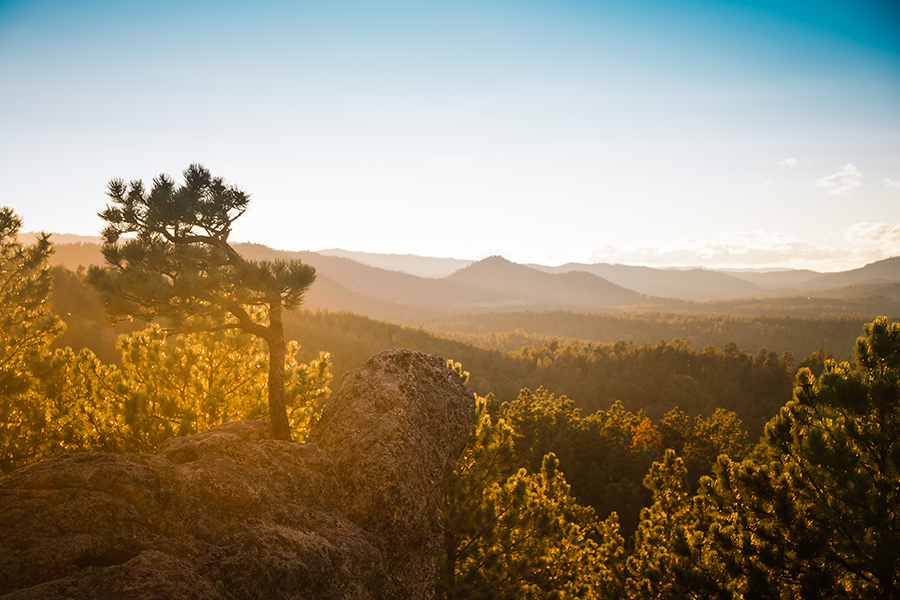
This is an excerpt from the book The Enthusiast’s Guide to Travel Photography by Jordana Wright.
Sometimes all your planning will go to hell. Your Caribbean vacation will be overwhelmed by strong surf and heavy rains, or your visit to a city will be overshadowed by protests or riots. Don’t be discouraged. Make the most of what’s around you to create compelling travel photographs anyway.
Ill-mannered Herds of Tourists
You wake up long before the sun, pack your gear, and head to what you hope will be an epic sunrise, only to find at least fifty photographers who had the very same idea. Hopefully, the photographers will be generous with the prime shooting spots and welcome you to join them. Realistically, they’ll be just as annoyed by your presence as you are by theirs. Tourists can be pushy and self-centered, and can become a major obstacle to work around. Take a breath. There’s no reason to give up or pack it in. When you are faced with a sightseeing horde, you have options—join them, wait them out, or find greener pastures.
If you choose to join them, and they are swarming in and around your ideal shot, the obvious answer is to use a tripod and neutral density filter to take a long exposure to help blur them out of the image. Similarly, you can take ten to twenty images of any exposure length and Photoshop the tourists out by stacking images to make a composite later. Also consider how you want to represent the scene—the most honest shot would include the tourists, demonstrating the popularity of the spot. In very crowded scenes, I like to take a longish exposure (3 to 20 seconds depending on the general speed of the crowd) to keep them present in the frame but still blur their features enough to avoid making them the focus of the image (Figure 12.1).
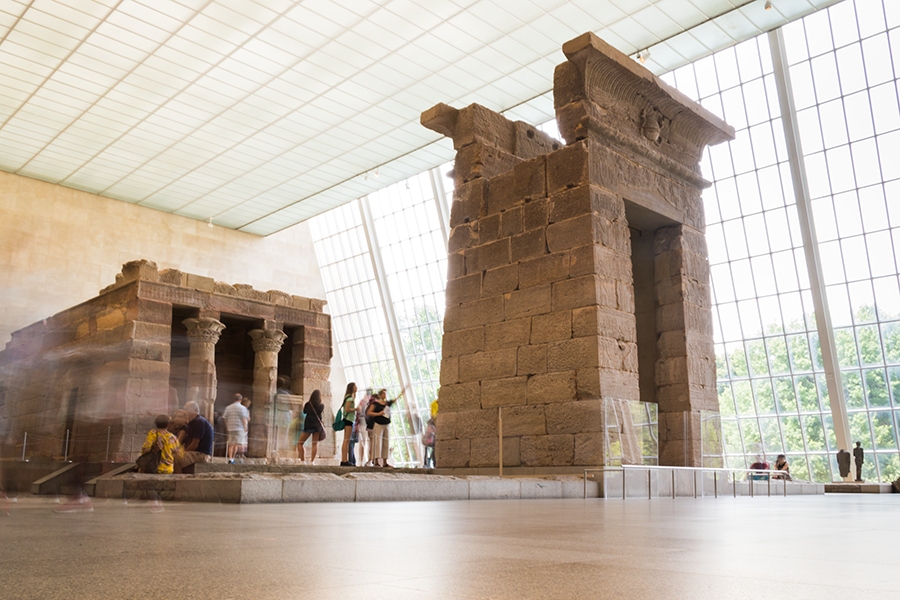
12.1 Temple of Dendur, Metropolitan Museum of Art, New York, New York ISO 100; 4 sec.; f/18; 18mm
If I have the time and am feeling particularly Zen about it, I prefer to simply wait them out. It took a long time to get a clear shot at Oak Alley Plantation (Figure 12.2), but it was worth it. In my experience, groups of tourists tend to cycle through an area after ten or twenty minutes—especially if they all came from the same bus. By waiting, you’ll have the opportunity to more deeply observe your surroundings and potentially find more images in the same vicinity that interest you.
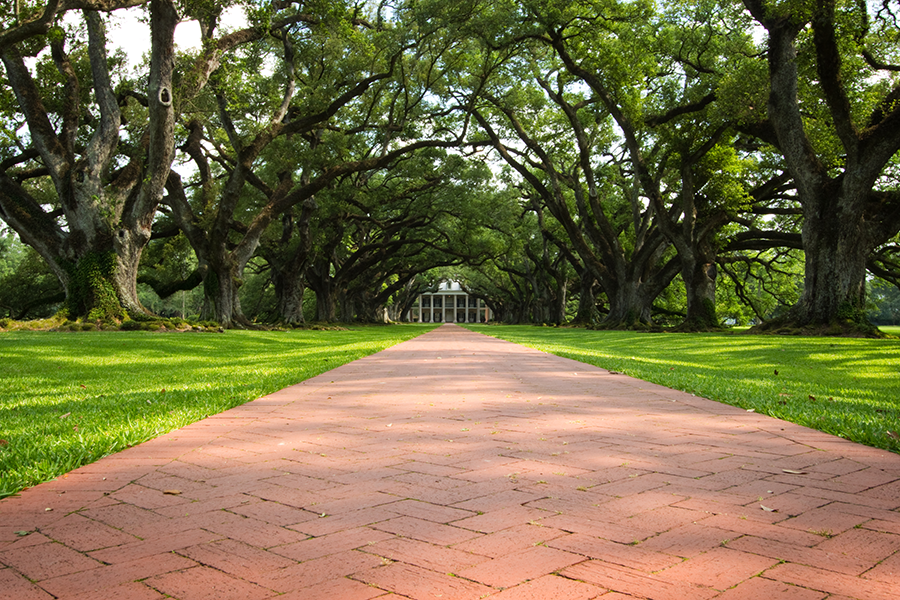
12.2 Oak Alley Plantation, Vacherie, Louisiana ISO 100; 1/4 sec.; f/22; 20mm
In select situations, if I’m on assignment or am particularly inflexible in what shot I’m trying to achieve, I will politely ask people to step out of the frame for a moment while I get my shot. I’ve had the most success offering to take a photo of their group with their camera or phone before they clear out—that way it feels more like a reciprocated favor and both sides are happy.
If none of these techniques feel ideal, then I will move on to a new spot. Many times a fresh perspective, free from tourists, can be achieved with a little mobility and effort. Walk farther down the path, or hike higher up the hill, or just keep driving in pursuit of something that grabs you.
On a visit to Mount Rushmore for golden hour, I was stuck in a massive line of waiting cars to reach the monument. I knew that the light wouldn’t wait, so I kept driving. First I found an unexpected perspective of Mount Rushmore (Figure 12.3), which I quickly photographed, before moving on and discovering an incredible overlook with a view of Black Hills National Forest (Figure 12.4). By choosing to abandon the lines and crowds, I lucked into several photographs that have become favorites in my portfolio.
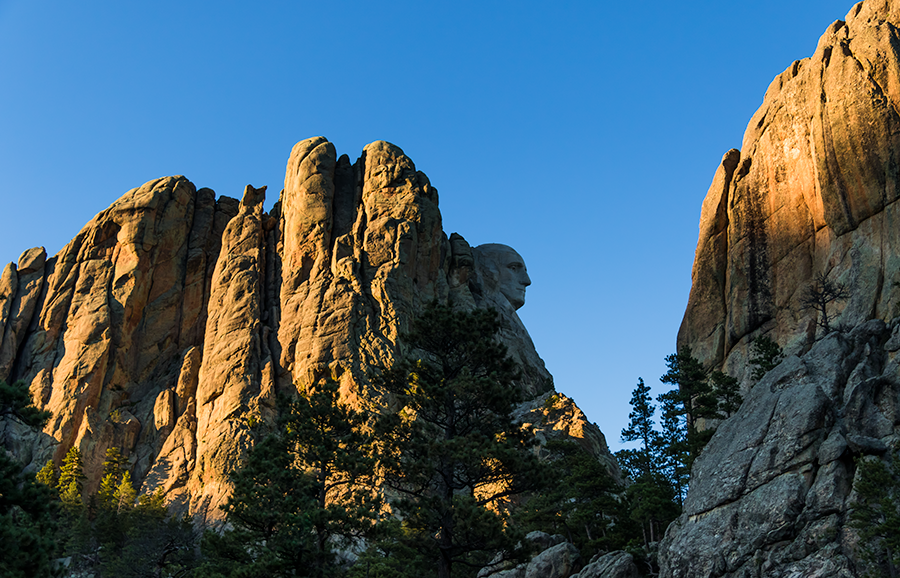
12.3 Mount Rushmore, Keystone, South Dakota ISO 160; 1/400 sec.; f/5.0; 35mm

12.4 Breezy Point, Keystone, South Dakota ISO 160; 1/200 sec.; f/5.6; 61mm
Bad Weather
Nasty weather for being out and about can still be beautiful weather for photographing. I travel with rain gear for myself and my camera, so I won’t be tempted to hide indoors when things get sloppy. I’ve shot in heavy rain and massive snow, and both conditions resulted in incredible photographic opportunities. Plus, you’re less likely to fight crowds if the weather is particularly gross.
Trips to tropical locations can feel particularly wasted in bad weather. My first instinct on a rainy Caribbean day is to hide inside with a book, but, as they say, fortune favors the brave. I’ve had great luck with the dramatic skies of heavy storms in the tropics. Dark, ominous clouds can still yield great, contrasty light (Figure 12.5), and fast shutter speeds help capture the violence of strong waves crashing on rocks. Nighttime long exposures can pick up some serious lightning off the coast. Puddles can result in amazing perspectives through repetition and reflection.
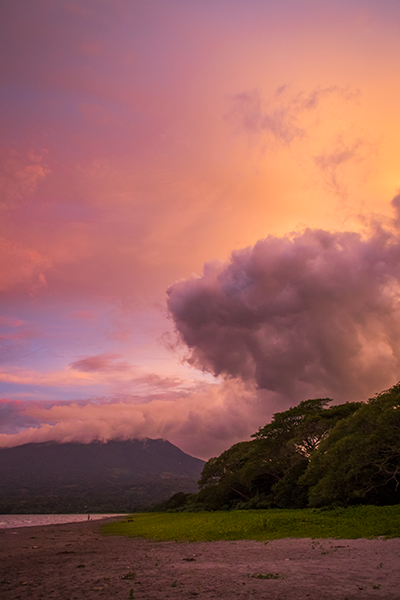
12.5 A fast-moving storm front over Lake Nicaragua lit up beautifully as the sun set. Ometepe, Nicaragua ISO 1250; 1/160 sec.; f/5.0; 18mm
On one trip to the British Virgin Islands, a continuous, uninteresting drizzle made a day of shooting seem pointless, but through a little exploration, and by driving to a higher altitude, I found an atmospheric sweet spot—a rare, tropical fog befitting a fairy tale (Figure 12.6). I’ve visited the same spot many times, and I’ve never seen it that way again. So get used to the idea of being physically uncomfortable for a little while, prep your camera for wet conditions, and capture the rare atmosphere bad weather brings.
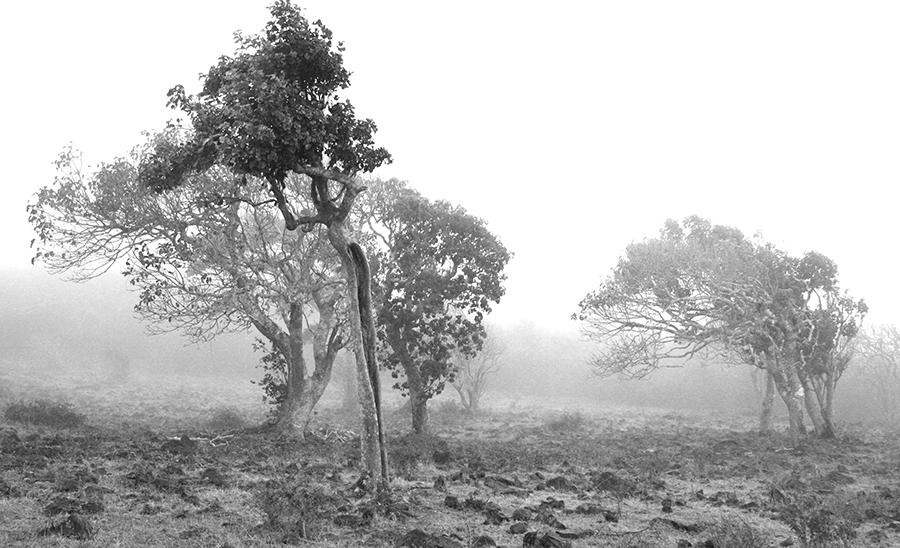
12.6 North Sound, Virgin Gorda, British Virgin Islands ISO 400; 1/100 sec.; f/8.0; 30mm
Boring Light
Uninteresting lighting can be one of the more difficult conditions to work around. Uniformly overcast skies yield flat, boring light for traditional landscapes. Rather than resorting to Photoshop sky swapping, I like to shift my subject matter slightly to accommodate the light. Even lighting from an overcast day can be perfect for shooting in woods (fewer hotspots and deep shadows) or portraiture (even lighting is quite flattering). Instead of shooting the overall scene, I like to focus on the textures, patterns, and details when the light is boring.
I had high hopes for a late afternoon shoot in the marshes of the Hudson River near Cold Spring, New York, but when I finally got through the woods to the boardwalks of the marsh, the day had grayed out considerably (Figure 12.7). Traditional vistas and landscapes were out. Instead I focused on the colors below the horizon line.
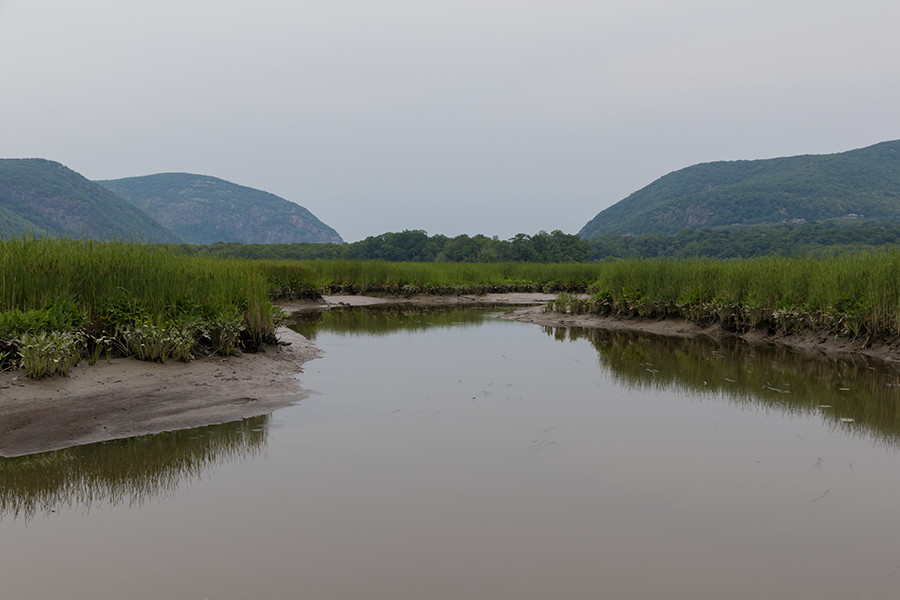
12.7 Constitution Marsh Audubon Center and Sanctuary, Philipstown, New York ISO 160; 1/125 sec.; f/7.1; 30mm
By cropping out the sky entirely, I was able to create unique, compelling images that focus on nuances of color, depth, and texture (Figures 12.8 and 12.9). On overcast days, greens are always greener, so seek out compelling natural areas and reduce your focus to a smaller, more detailed view.
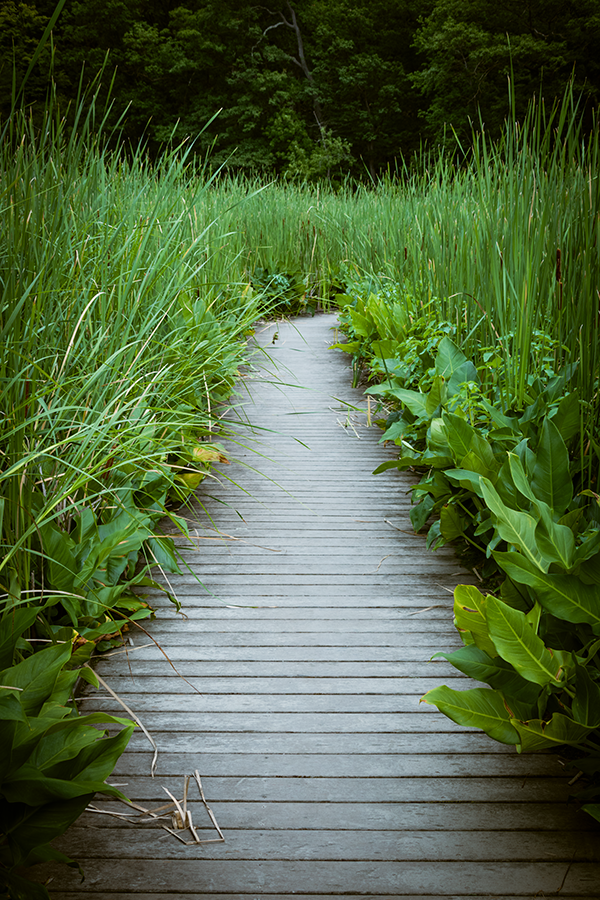
12.8 Constitution Marsh Audubon Center and Sanctuary, Philipstown, New York ISO 250; 1/125 sec.; f/7.1; 30mm

12.9 Constitution Marsh Audubon Center and Sanctuary, Philipstown, New York ISO 1000; 1/125; f/9.0; 90mm
Racing the Clock
During sunrises and sunsets I always feel crunched for time, but when I visited Nicaragua’s Masaya volcano I experienced a different kind of time constraint. When planning my visit, I anticipated having plenty of time to explore the viewpoints. I wanted a wide range of shots, from tight closeups on the active volcano’s boiling lava, to wider shots showing the glow reflected on visitors’ faces. I wanted video, I wanted a selfie with a volcano, I wanted photos taken with my phone that I could post right away.
Unfortunately, active volcanoes are notoriously unpredictable. Leading up to my visit, the park had been closed for several days because of dangerous gas emissions. The day I went, the park reopened for only a couple of hours and each visitor was limited to fifteen minutes at the crater because of the fumes. I was lucky to get to see it at all.
Knowing I would have limited time, I opted to focus on the closeups and got all my gear ready to go in the car on the way up. I shot with my zoom lens and a tripod to stabilize my camera, and concentrated on getting one good shot of the lava below (Figure 12.10). Fifteen minutes felt like the blink of an eye, but by preparing myself mentally with a game plan, I managed to make a photograph that pleased me in limited time.
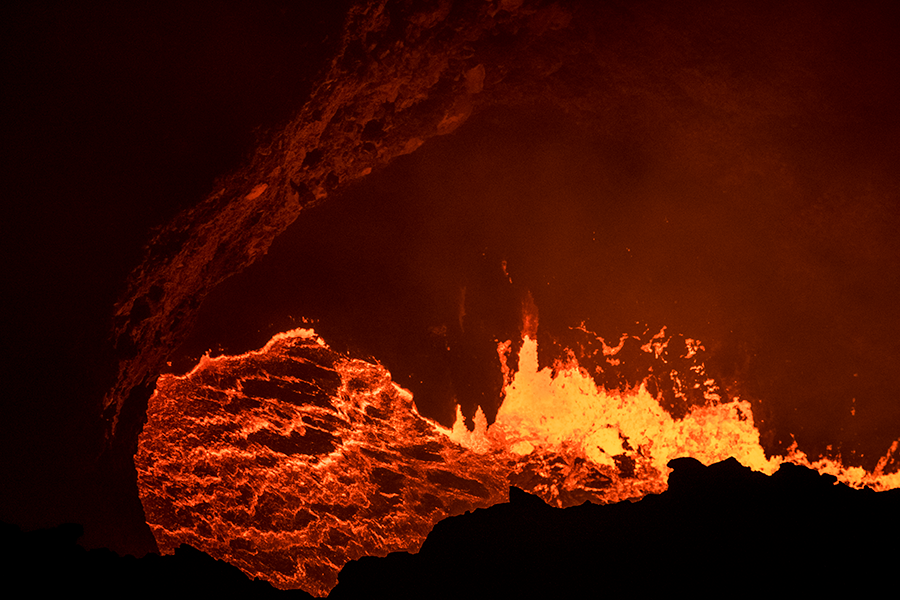
12.10 Masaya Volcano National Park, Nicaragua ISO 3200; 1/125 sec.; f/6.3; 600mm
Erupting volcanoes, breaching whales, rainbows, lightning, eclipses—all the coolest natural phenomena offer a narrow window for photography. Revisit your mental preparation techniques, focus on getting one good shot, and make the best of what’s in front of you.
